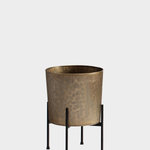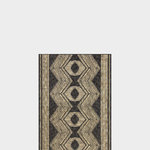Places That Heal
PLACES THAT HEAL….
(updated 11/2023)
It is an old cliche now. But we want to talk about it anyway.
Where does your mind wander when you read the phrase “Places That Heal?” What is a place that heals to you personally? To many, the obvious place is a church or a hospital for function alone. To others, their minds take them to a beach, a public monument, or some other outdoor memory may come to mind. They may simply think of a special room in their own home.
There is no wrong answer.
Let’s focus on the church and hospital for arguments sake. These two places can be considered places that heal for many good – and obvious- reasons. They are places that are usually designed with a desire to communicate healing, inclusion and comfort to you. There is a desire to impact and transform you. If you walk through the doors of either of these institutions, you might instantly feel as if you are in a safe or sacred place. Those feelings of safety and sanctity reduce stress and bolster your will.
Usually, these spaces are designed to engage your senses, deeply and in this manner. Much like music and art, design at its very best can comfort you when you are sick; weak; worried. Design can redirect your thoughts, calm your frazzled nerves and make your life easier by lifting unnecessary burdens. Both of these institutions utilize both 2 and 3-D art to further reinforce a message of comfort, to distract from stress or boredom; to bring peace to a mind that may be worried.
That seems like a tall order.
So let’s return to the original question. What is a place that heals? We agree that there is no wrong answer, right? I have created a random and rambling list. You may agree with some places and disagree with others. How is it, that one place is healing for one person and one place is healing to another? There must be a common denominator amongst all of these places. In trying to find the common denominator, I have looked way back into 1950’s research studies. It was not necessary to go back that far but, the Schachter-Singer Studies are so simplified. They get right to the point. And these studies proved human behavior is impacted by immediate surroundings. These early studies, while rudimentary are still relevant because they prove the simple theory that environmental “disposition” impacts our emotions and moods. In short, Schachter-Singer Studies tell us: a messy, haphazard environment upsets us;a clean, neat, orderly environment soothes.
Schachter-Singer is very simple in concept. It gets tricky with human perception diced in. What you perceive as neat and orderly I may perceive as messy and haphazard and so on. But, to apply this simple theory in practice,you do not have to over-think it. To create a home or workplace renovation that is “healing” or an environment that facilitates stress reduction to a degree that allows the body to heal, you would have to consider placing emphasis on elements that purposefully calm.
Research shows that, in the workplace, focusing on stress reduction reduces employee turnover,increases performance and productivity. Obviously, to incorporate these techniques at home you are trading clutter and tension for an increase in comfort. You make a decision to impact your body’s physiology with every color, texture, material and form that you select. Your internal response to your immediate environment is out of your control - unless you choose to design to impact it. And when you decide to design and make intentional, concentrated positive changes in both work and home environments, you are making a big impact and investment on your overall health and long term well being.
So, for our next adventure in design… We will share elements in Design and Construction that purposefully calm. This will include easy to implement noise mitigation for the home and office.
NOTE:
For more information on perception, physiology/health and design - check out the article “Corridors of the Mind” from The Academy of Neuroscience for Architecture (ANFA).
Here is a brief excerpt from this article below:
“…in designing hospitals, schools, and homes for people with all manner of disabilities, (we could) create places that would support the development of premature babies, the treatment of children with autism, the fostering of learning abilities of students…. imagine an Alzheimer’s facility that could help its residents remember who they are.”
The full article is posted here: http://www.psmag.com/culture/corridors-of-the-mind-49051/ Compelling evidence for more research and thought on the designer’s end regarding health and designs impact on physiology.
____________________________
06/2012
Commonwealth Design and Accessibility Partnership
occoquan ~ richmond ~ williamsburg ~ tidewater
www.CDAPTidewater.com
CDAPTidewater@gmail.com
(804) 525-8450
(updated 11/2023)
It is an old cliche now. But we want to talk about it anyway.
Where does your mind wander when you read the phrase “Places That Heal?” What is a place that heals to you personally? To many, the obvious place is a church or a hospital for function alone. To others, their minds take them to a beach, a public monument, or some other outdoor memory may come to mind. They may simply think of a special room in their own home.
There is no wrong answer.
Let’s focus on the church and hospital for arguments sake. These two places can be considered places that heal for many good – and obvious- reasons. They are places that are usually designed with a desire to communicate healing, inclusion and comfort to you. There is a desire to impact and transform you. If you walk through the doors of either of these institutions, you might instantly feel as if you are in a safe or sacred place. Those feelings of safety and sanctity reduce stress and bolster your will.
Usually, these spaces are designed to engage your senses, deeply and in this manner. Much like music and art, design at its very best can comfort you when you are sick; weak; worried. Design can redirect your thoughts, calm your frazzled nerves and make your life easier by lifting unnecessary burdens. Both of these institutions utilize both 2 and 3-D art to further reinforce a message of comfort, to distract from stress or boredom; to bring peace to a mind that may be worried.
That seems like a tall order.
So let’s return to the original question. What is a place that heals? We agree that there is no wrong answer, right? I have created a random and rambling list. You may agree with some places and disagree with others. How is it, that one place is healing for one person and one place is healing to another? There must be a common denominator amongst all of these places. In trying to find the common denominator, I have looked way back into 1950’s research studies. It was not necessary to go back that far but, the Schachter-Singer Studies are so simplified. They get right to the point. And these studies proved human behavior is impacted by immediate surroundings. These early studies, while rudimentary are still relevant because they prove the simple theory that environmental “disposition” impacts our emotions and moods. In short, Schachter-Singer Studies tell us: a messy, haphazard environment upsets us;a clean, neat, orderly environment soothes.
Schachter-Singer is very simple in concept. It gets tricky with human perception diced in. What you perceive as neat and orderly I may perceive as messy and haphazard and so on. But, to apply this simple theory in practice,you do not have to over-think it. To create a home or workplace renovation that is “healing” or an environment that facilitates stress reduction to a degree that allows the body to heal, you would have to consider placing emphasis on elements that purposefully calm.
Research shows that, in the workplace, focusing on stress reduction reduces employee turnover,increases performance and productivity. Obviously, to incorporate these techniques at home you are trading clutter and tension for an increase in comfort. You make a decision to impact your body’s physiology with every color, texture, material and form that you select. Your internal response to your immediate environment is out of your control - unless you choose to design to impact it. And when you decide to design and make intentional, concentrated positive changes in both work and home environments, you are making a big impact and investment on your overall health and long term well being.
So, for our next adventure in design… We will share elements in Design and Construction that purposefully calm. This will include easy to implement noise mitigation for the home and office.
NOTE:
For more information on perception, physiology/health and design - check out the article “Corridors of the Mind” from The Academy of Neuroscience for Architecture (ANFA).
Here is a brief excerpt from this article below:
“…in designing hospitals, schools, and homes for people with all manner of disabilities, (we could) create places that would support the development of premature babies, the treatment of children with autism, the fostering of learning abilities of students…. imagine an Alzheimer’s facility that could help its residents remember who they are.”
The full article is posted here: http://www.psmag.com/culture/corridors-of-the-mind-49051/ Compelling evidence for more research and thought on the designer’s end regarding health and designs impact on physiology.
____________________________
06/2012
Commonwealth Design and Accessibility Partnership
occoquan ~ richmond ~ williamsburg ~ tidewater
www.CDAPTidewater.com
CDAPTidewater@gmail.com
(804) 525-8450






wyndham design is major
Q